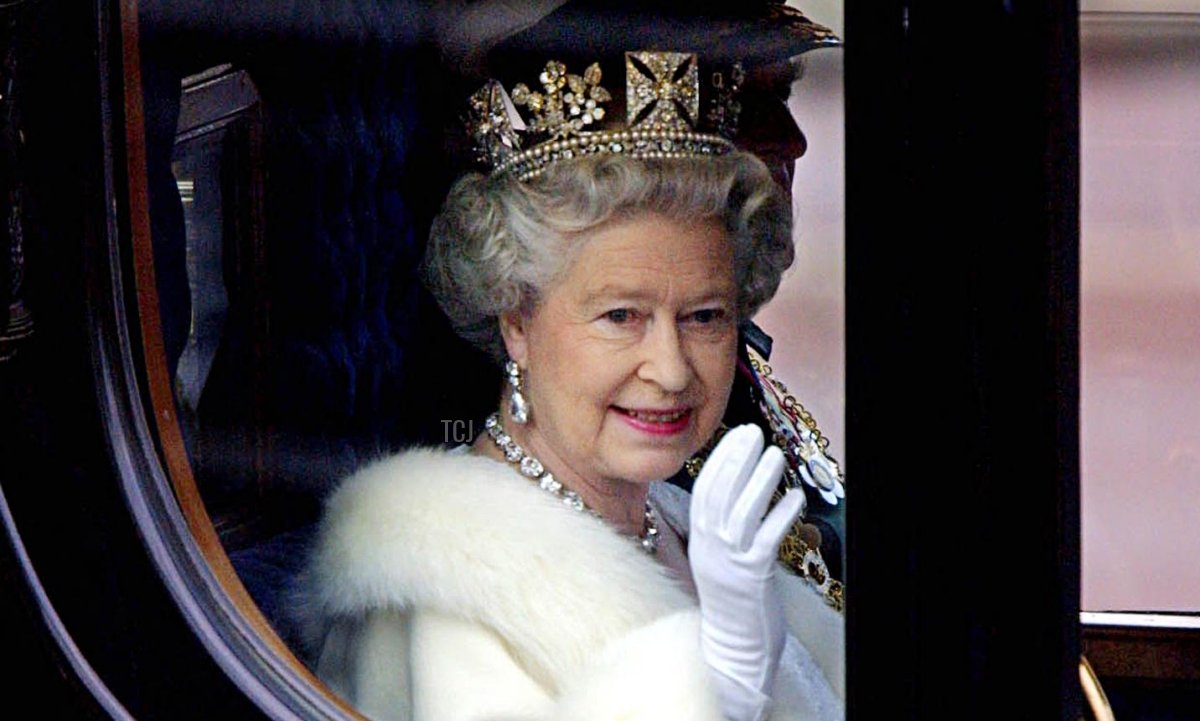
One hundred twenty-one years ago today, Queen Victoria of the United Kingdom died at Osborne House on the Isle of Wight. She left behind an incredible legacy—and a whole lot of royal jewelry. She earmarked several important pieces from her collection as heirlooms of the crown, and today, we’re celebrating her collection by looking at the pieces from that group that have been worn by the Queen.
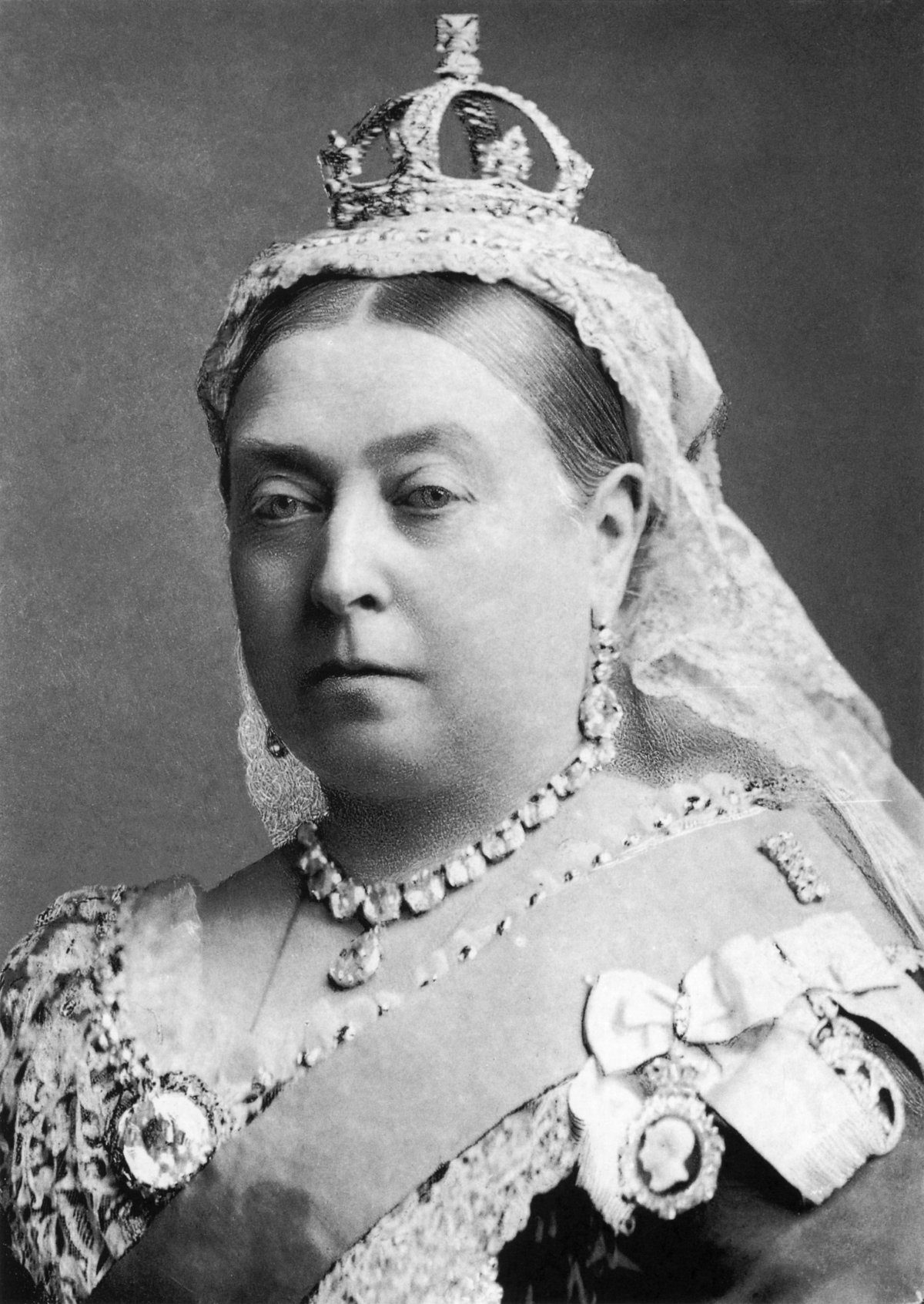
The designation of “heirloom of the crown” in Britain means that a jewel passes directly from monarch to monarch. There are several publications that include lists of the jewels that Queen Victoria earmarked as heirlooms of the crown. For this article, I’m working off the list published by Suzy Menkes in The Royal Jewels. (I have the third edition, published in 1988.) Menkes notes that she used the Twining Papers, plus documents from the Royal Library at Windsor, to compile the list. I’ll also note that I’m limiting my discussion here to the jewels from the collection that the Queen has worn, although there are many more pieces in the grouping. And there may be other jewels worn by the present Queen from the collection that I’ve failed to identify. (Please let me know about those in the comments!)

The first item on Menkes’s list is this jewel: the diamond and pearl diadem made in 1820 by Rundell, Bridge, and Rundell. It was made for the coronation of King George IV, but since then it has been worn exclusively by queens regnant and consort. Elizabeth donned it in public for the first time in November 1952 at her first State Opening of Parliament as monarch, and she’s worn it regularly for the event ever since. In the early years of her reign, she also occasionally used the diadem for other gala occasions. Here, the Queen wears the diadem for the State Opening of Parliament in December 2008, paired with the Gloucester Pendant Earrings.
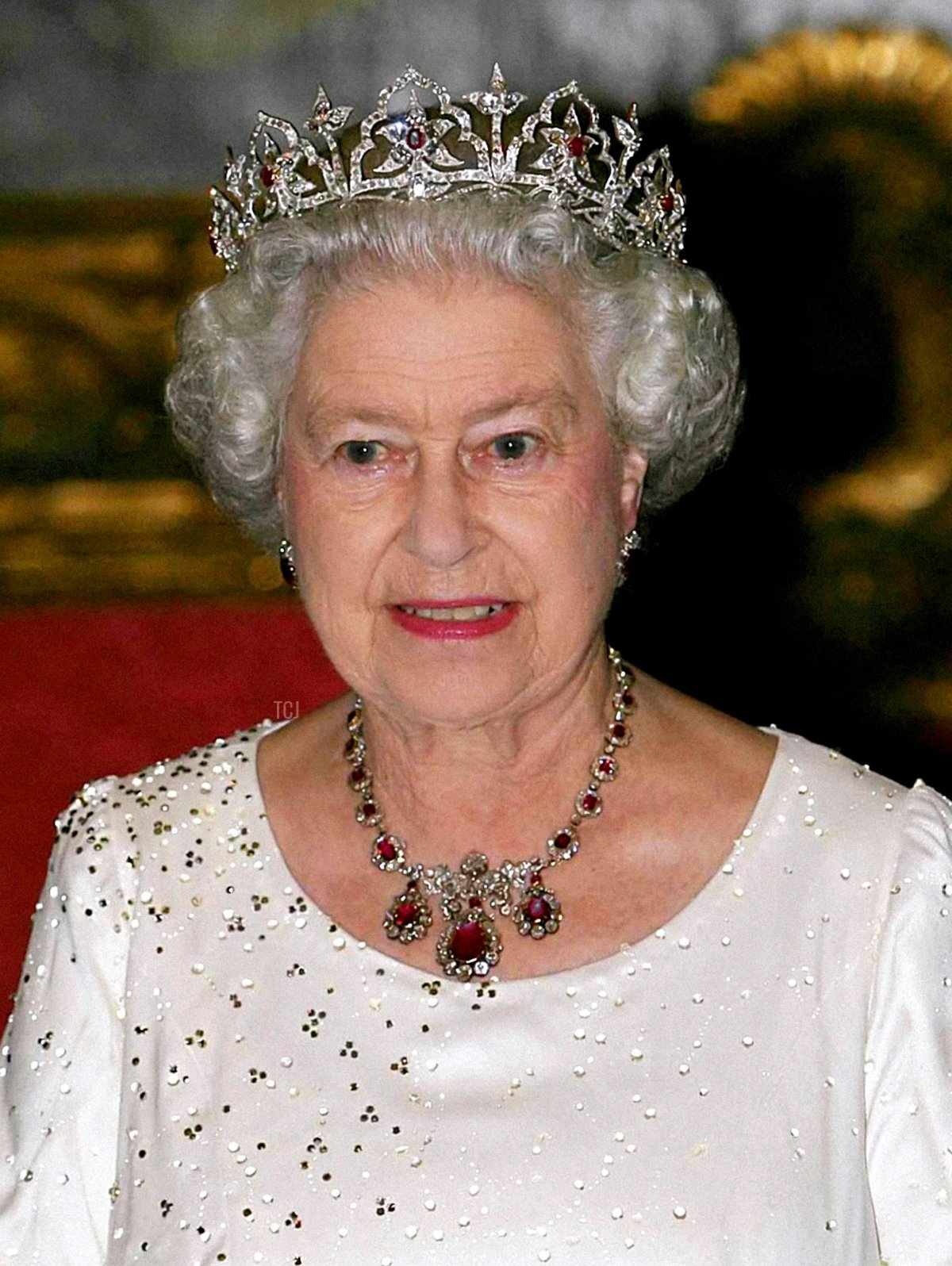
Inspired by Indian motifs he viewed at the Great Exhibition, Prince Albert designed this diamond circlet for Queen Victoria in 1853. The piece was originally studded with opals. When the British lost the Hanoverian claim, the circlet had to be remade with new diamonds. In the early 20th century, the entire suite was renovated again when Queen Alexandra and Queen Mary had the opals replaced with rubies. The Queen Mother absolutely loved the tiara, and she retained it even after her daughter became Queen in 1952. The present Queen added it to her collection on her mother’s death in 2002. Here, the Queen wears the circlet with Queen Mary’s Ruby Cluster Earrings and the Baring Ruby Necklace for a banquet in Malta in November 2005.
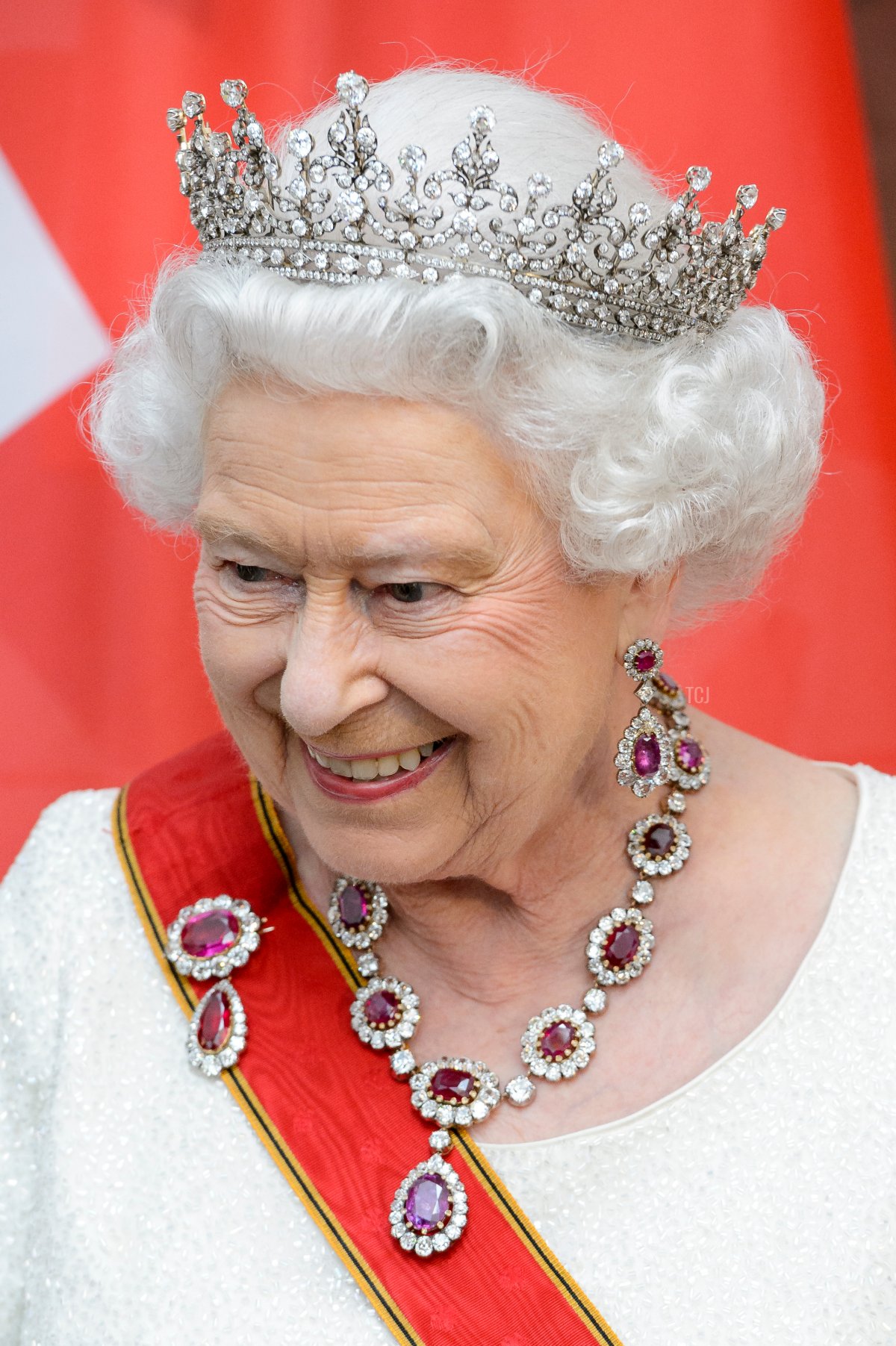
To go with the new Indian Circlet, Prince Albert purchased a coordinating suite of opal jewelry for Queen Victoria in 1854. Like the tiara, the opals in the necklace, earrings, and brooch were replaced with rubies by Queen Alexandra and Queen Mary. As she did with the circlet, the Queen Mother retained the use of these jewels after her husband’s death, and the Queen added them to her collection in 2002. Here, the Queen wears the necklace, earrings, and brooch for a state banquet during her visit to Germany in June 2015, paired with the Girls of Great Britain and Ireland Tiara.

The Cockade Brooch
One of the most fascinating heirlooms left to the crown by Queen Victoria is a large diamond cockade ornament, likely originally used as an ornament for a gentleman’s cockade hat. Menkes describes it as a “cockade set with brilliants altered for Queen Alexandra as a three-part cloak clasp.” The Queen Mother and the present Queen have both worn just the central part of the ornament as a very large brooch. Here, the Queen uses the brooch to secure her order sash during a state banquet at Buckingham Palace in honor of the President of South Korea in November 2013, paired with the Girls of Great Britain and Ireland Tiara and the Pear-Shaped Diamond Drop Cluster Suite.
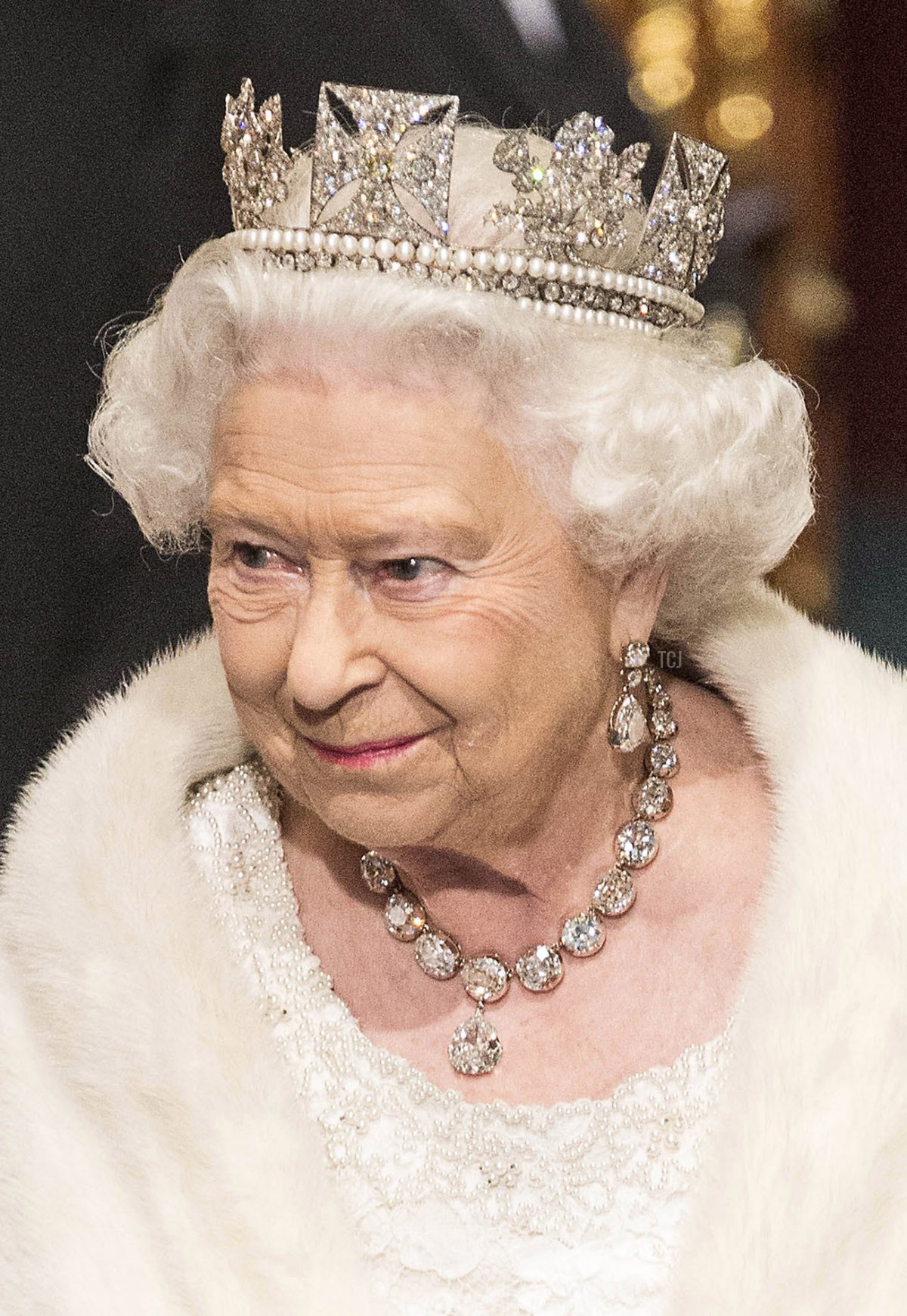
The Coronation Necklace and Earrings
This necklace and its coordinating earrings were made in 1858 by Garrard to replace jewels that had been lost in the Hanoverian claim. The pendant of the necklace is the Lahore Diamond, which alone weighs more than 22 carats. The drops of the earrings are also Indian diamonds; they were originally a part of the armlet setting of the Koh-i-Noor diamond. (I love Menkes’s description of the earrings: “large brilliant ear-tops and drops.”) Queen Alexandra wore the necklace at her coronation; Queen Mary, Queen Elizabeth, and Queen Elizabeth II wore both the necklace and the earrings at theirs. Here, the Queen wears the necklace and earrings with the Diamond Diadem for the State Opening of Parliament in May 2015.
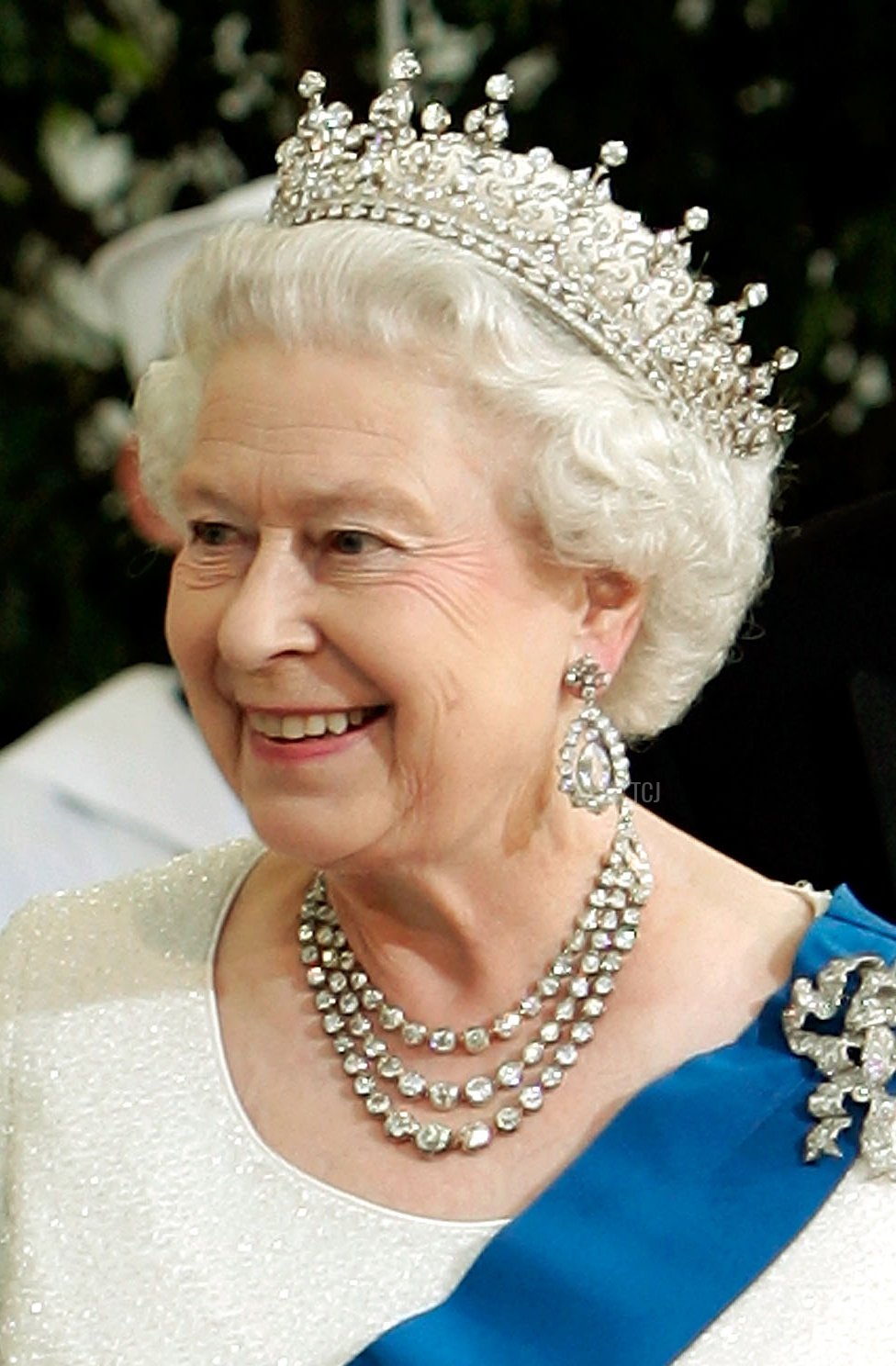
Queen Victoria designated three complete diamond collet necklaces (the Coronation Necklace, plus a 45-collet necklace and a 42-collet necklace) as heirlooms of the crown, and she also left a collection of 154 spare diamond collets. These were used later, especially by Queen Mary, to adjust and lengthen other necklaces. In 1950, King George VI had 105 of the collets used to make a new diamond festoon necklace. The Queen inherited its exclusive use in 1952, and she’s worn it regularly for the past seven decades. Here, the Queen wears the necklace for a state dinner in Washington, D.C., in May 2007, paired with the Girls of Great Britain and Ireland Tiara, Queen Mary’s Diamond Frame Earrings, and Queen Mary’s Lover’s Knot Brooch.
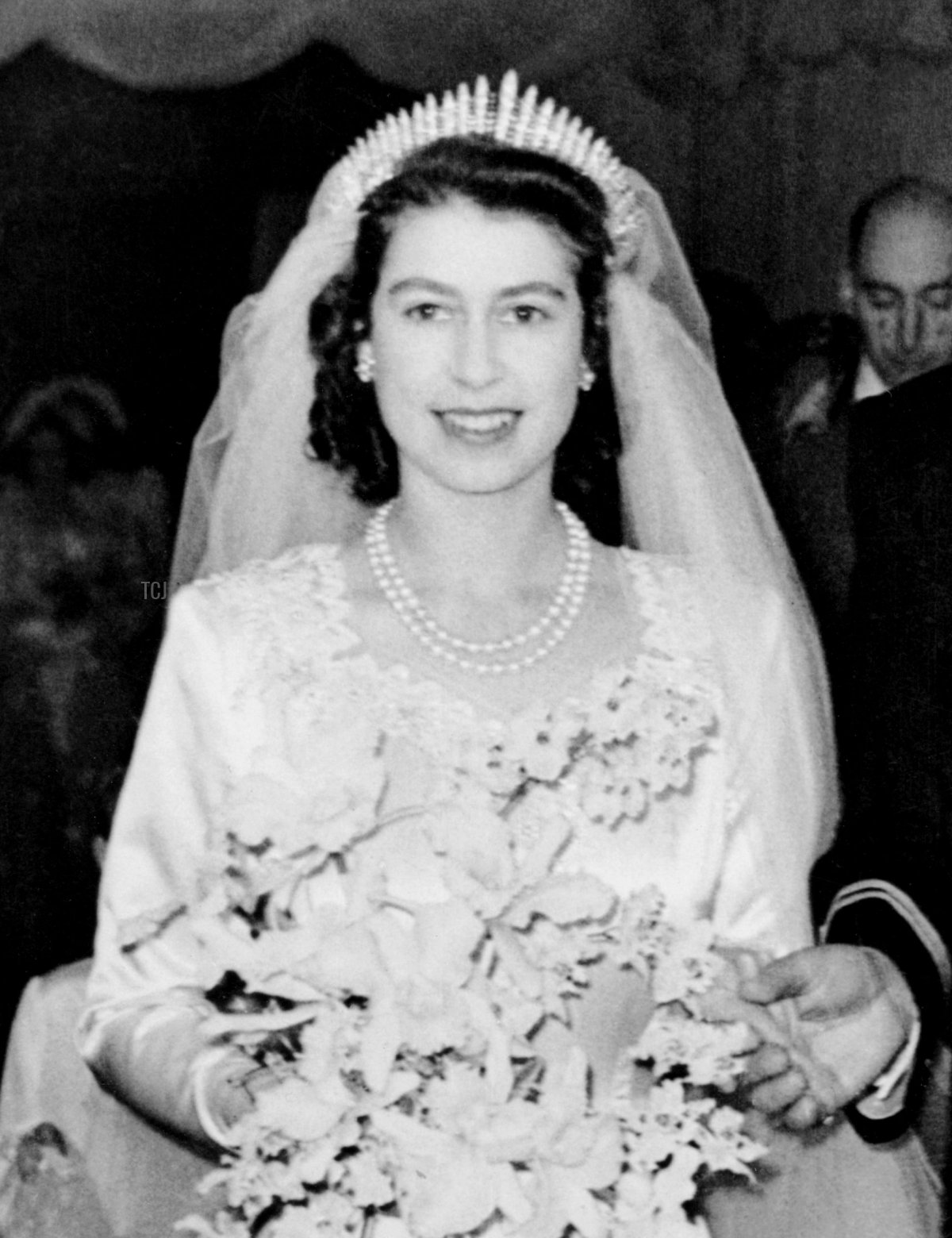
The Queen Anne and Queen Caroline Pearl Necklaces
Princess Elizabeth’s father, King George VI, dipped into the royal vaults to offer her these paired pearl necklaces as a wedding gift, likely knowing that she’d inherit them as heirlooms of the crown eventually anyway. If family tradition is correct, they’re among the oldest pieces of British royal jewelry still worn by the Queen. The smaller strand, made of 46 pearls, is said to have been worn by Queen Anne, the last Stuart monarch. The longer strand, which includes 50 pearls, is attributed to Caroline of Ansbach, the queen consort of George II. Queen Victoria’s jewel inventory of 1896, made by Garrard, notes the pearl necklaces and is the first recorded statement of their Stuart/Hanoverian provenance. Here, Princess Elizabeth wears both necklaces on her wedding day at Westminster Abbey in November 1947, paired with Queen Mary’s Fringe Tiara and the Gloucester Diamond and Pearl Earrings.

The Indian Pearls
Telling the difference between the numerous pearl necklaces in the Queen’s collection is a difficult challenge, but I believe these are indeed the ones named the “Indian Pearls” on Menkes’s list. They’re described as “four strand pearls from treasury at Lahore, presented to Queen Victoria by the Honourable East India Company in 1851 with ruby snap.” Menkes goes on to note that the necklace was “reset in 1941,” likely divided up into three or four strands rather than two. This necklace still indeed has a ruby snap. Here, the Queen wears the pearls (the top two strands) and a third, longer pearl necklace, for a gala celebration at the Royal Opera House in London in October 2012, paired with Queen Mary’s Ruby Cluster Earrings.
This set of diamond and amethyst jewelry was originally owned by Queen Victoria’s mother, the Duchess of Kent. Leslie Field notes that the demi-parure is “the oldest set of jewellery in the royal collection.” The set includes a necklace, a set of three brooches, a pair of hair combs, and a pair of earrings. Elizabeth sometimes wears one of the brooches, but she has only rarely worn the larger set in public.. Here, on one of those rare occasions, the Queen wears the earrings, necklace, and brooch for a banquet in Portugal in March 1985, paired with the Girls of Great Britain and Ireland Tiara.
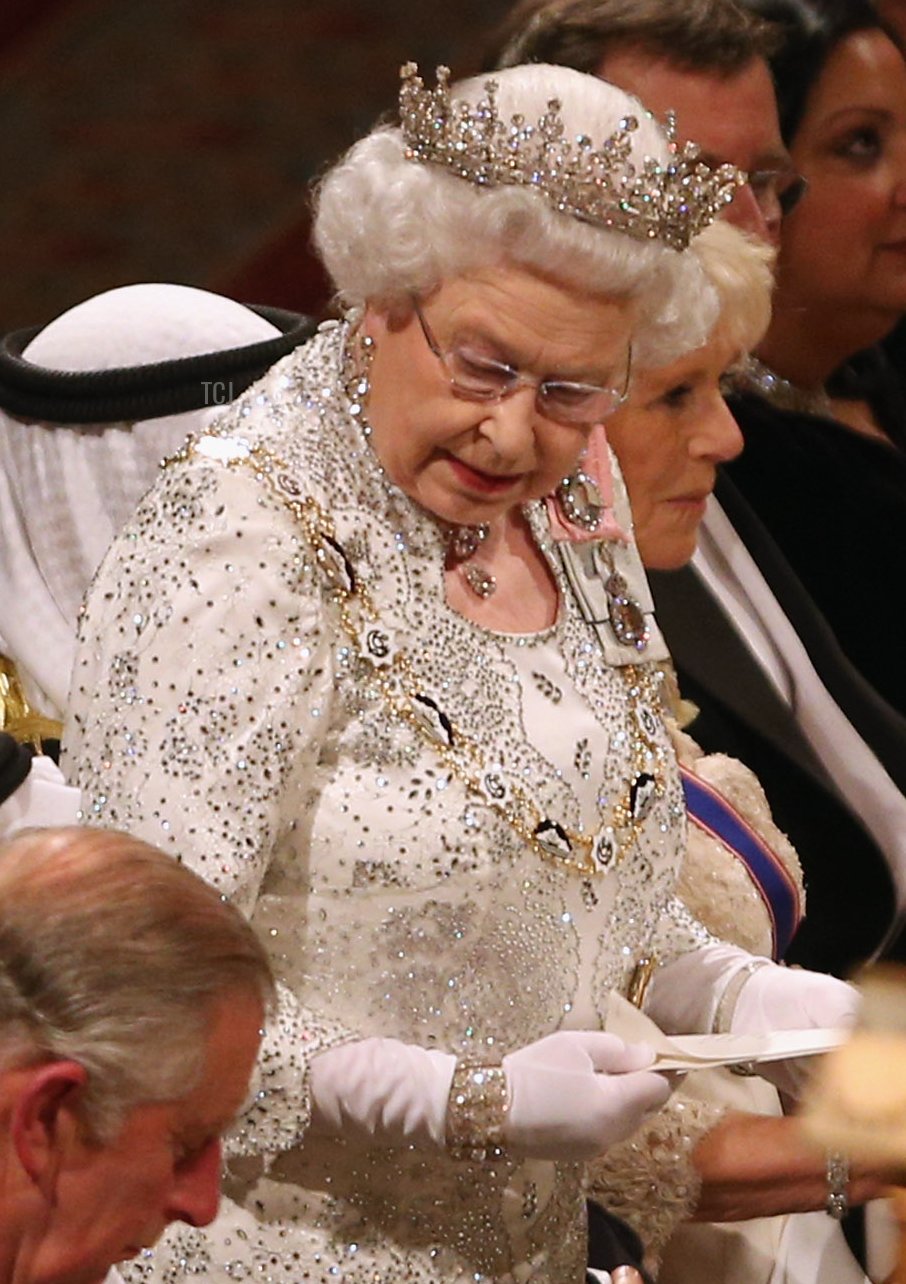
The Diamond Foliage Bracelet
Queen Victoria left several bracelets to the crown, including at least two set with diamonds. This bracelet is the one described by Menkes as having “five square foliage tablets set with brilliants.” (The other has “four rows of brilliants, mounted 1838.”) The foliage bracelet is very similar in size and shape to the Edinburgh Wedding Bracelet, and it’s easy to mix the two up from a distance. Here, the Queen wears the foliage bracelet on her right wrist during a state banquet at Windsor Castle in honor of the Amir of Kuwait in November 2012, paired with the Girls of Great Britain and Ireland Tiara and the Coronation Necklace and Earrings.
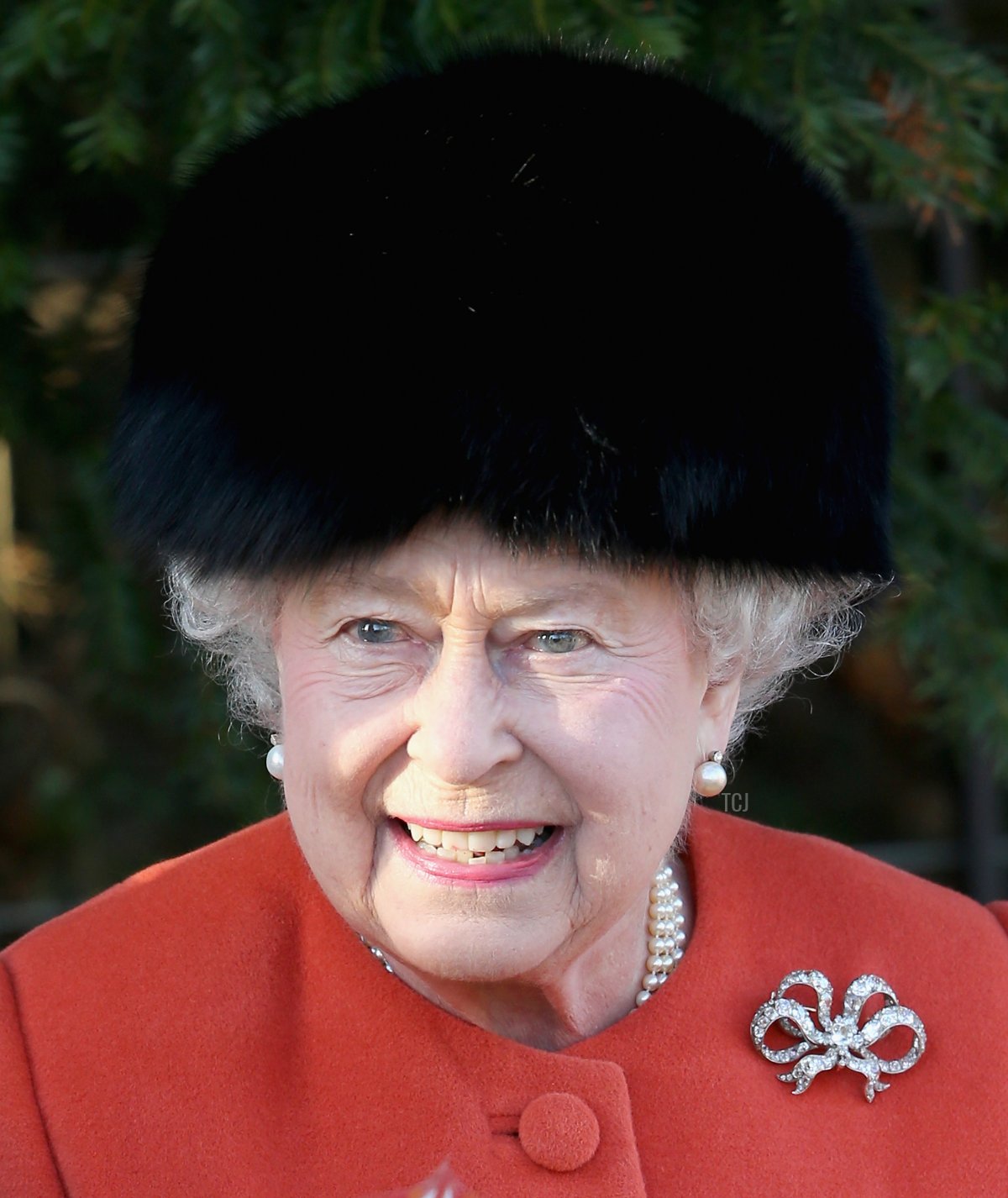
This set of three diamond bow-shaped brooches was also created in 1858 to replace jewels lost to the King of Hanover. Because they are heirlooms of the crown, they passed from Victoria to Alexandra to Mary to Elizabeth to Elizabeth II, arriving in the Queen’s jewelry box in 1952. She still wears them today, though generally only one at a time. (Queen Mary, being Queen Mary, liked to wear all three together.) Here, the Queen wears one of the brooches for a Christmas Day church service at King’s Lynn near the Sandringham Estate in December 2013.
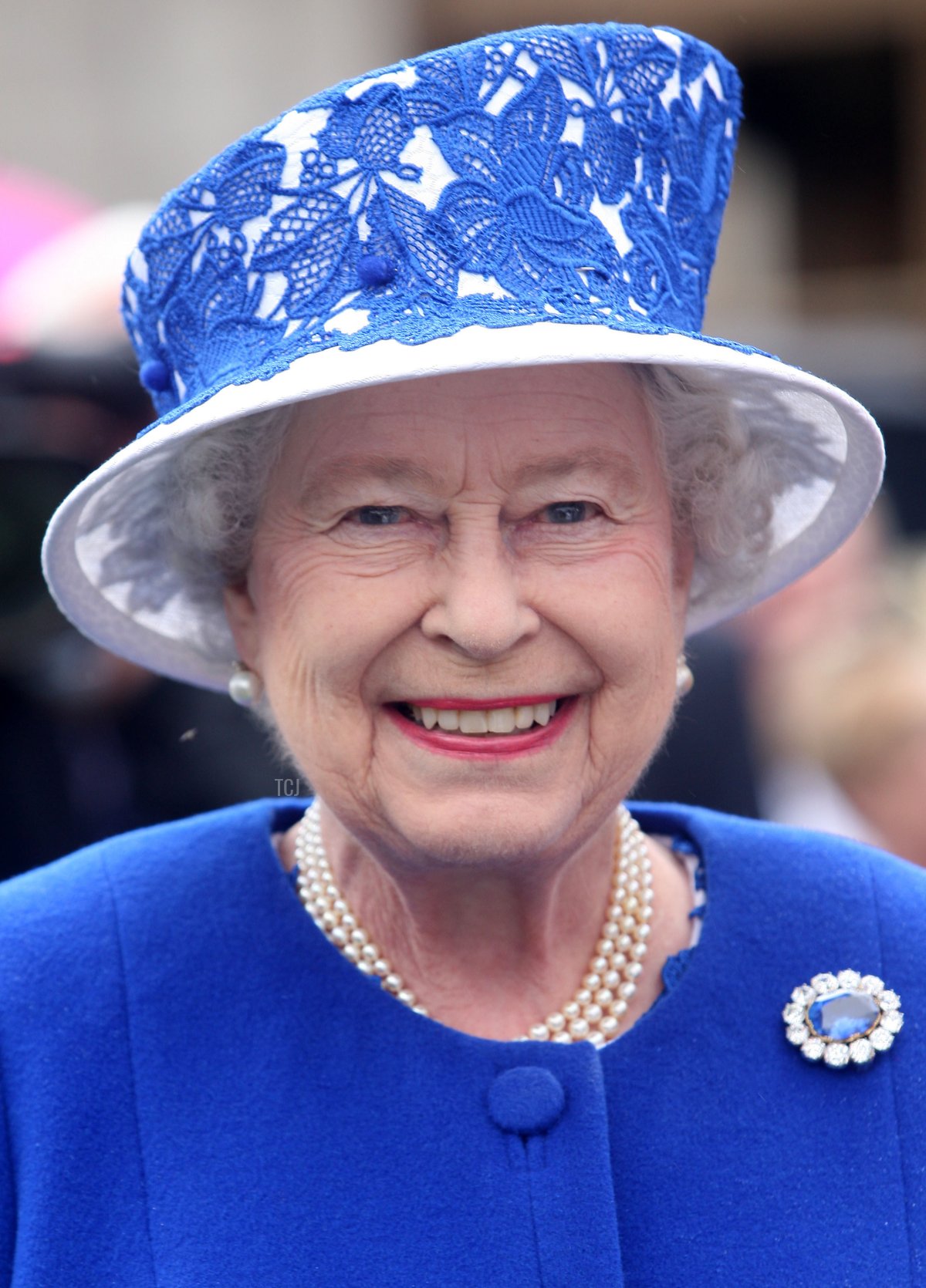
This classic diamond and sapphire brooch was Prince Albert’s wedding gift to Queen Victoria; he presented it to her on the day before their wedding in February 1840, and she was smitten with the piece immediately. She wore the brooch at her wedding, and she later designated it as an heirloom of the crown; it has been worn by all subsequent queens, and it remains a major favorite of the Queen today. Here, she wears the brooch for a garden party at Balmoral Castle in Scotland in August 2012.
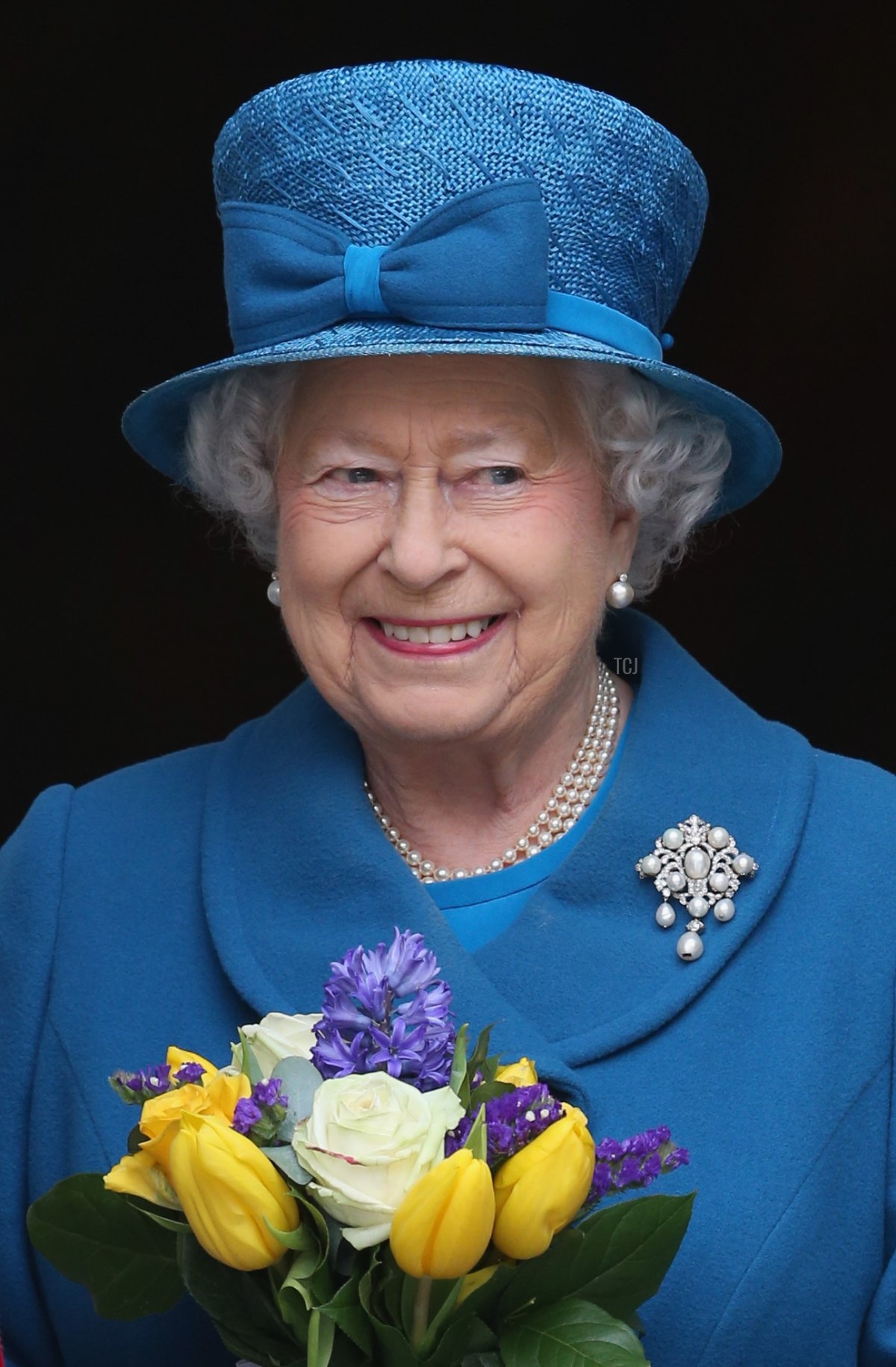
The list of the heirlooms of the crown in Menkes includes a brooch of “diamonds and pearls with three pendant pearls.” This is one of the heirlooms that stayed with the Queen Mother after the death of King George VI, which means that the Queen didn’t add it to her collection until 2002. Here, the Queen wears the brooch in March 2015 for a service of commemoration in London for troops who were stationed in Afghanistan.
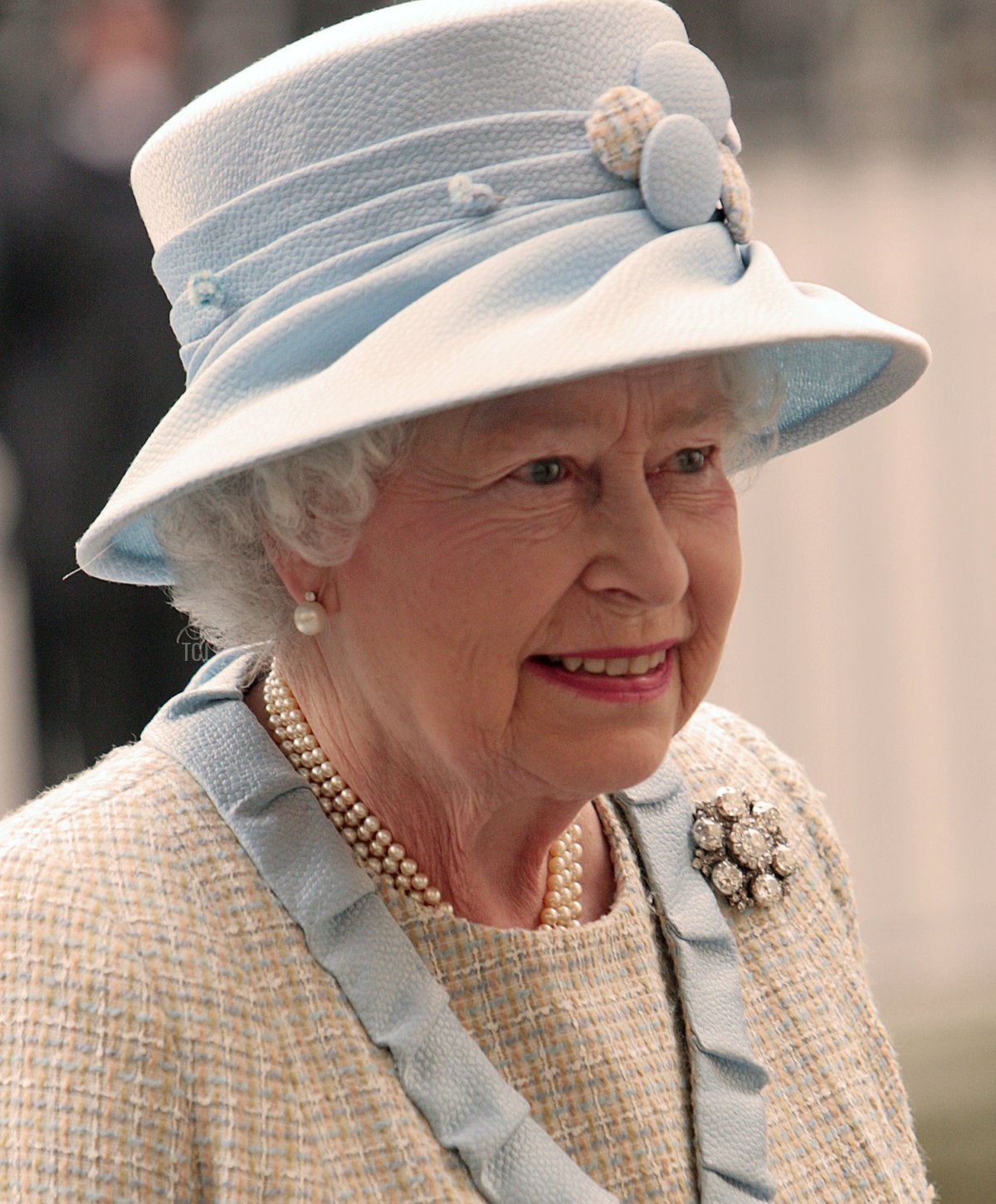
The second-oldest jewel that Elizabeth received in the “heirlooms” collection is this diamond brooch, made by Rundell, Bridge, and Co. in 1831 for Queen Adelaide, the wife of King William IV. Originally intended as a clasp for a pearl necklace, the piece has been worn as a brooch by every queen since. Beautiful, detailed photos of the brooch can be seen in Hugh Roberts’s The Queen’s Diamonds. Here, the Queen wears the brooch with pearls for the Commonwealth Day Service at Westminster Abbey in March 2009.
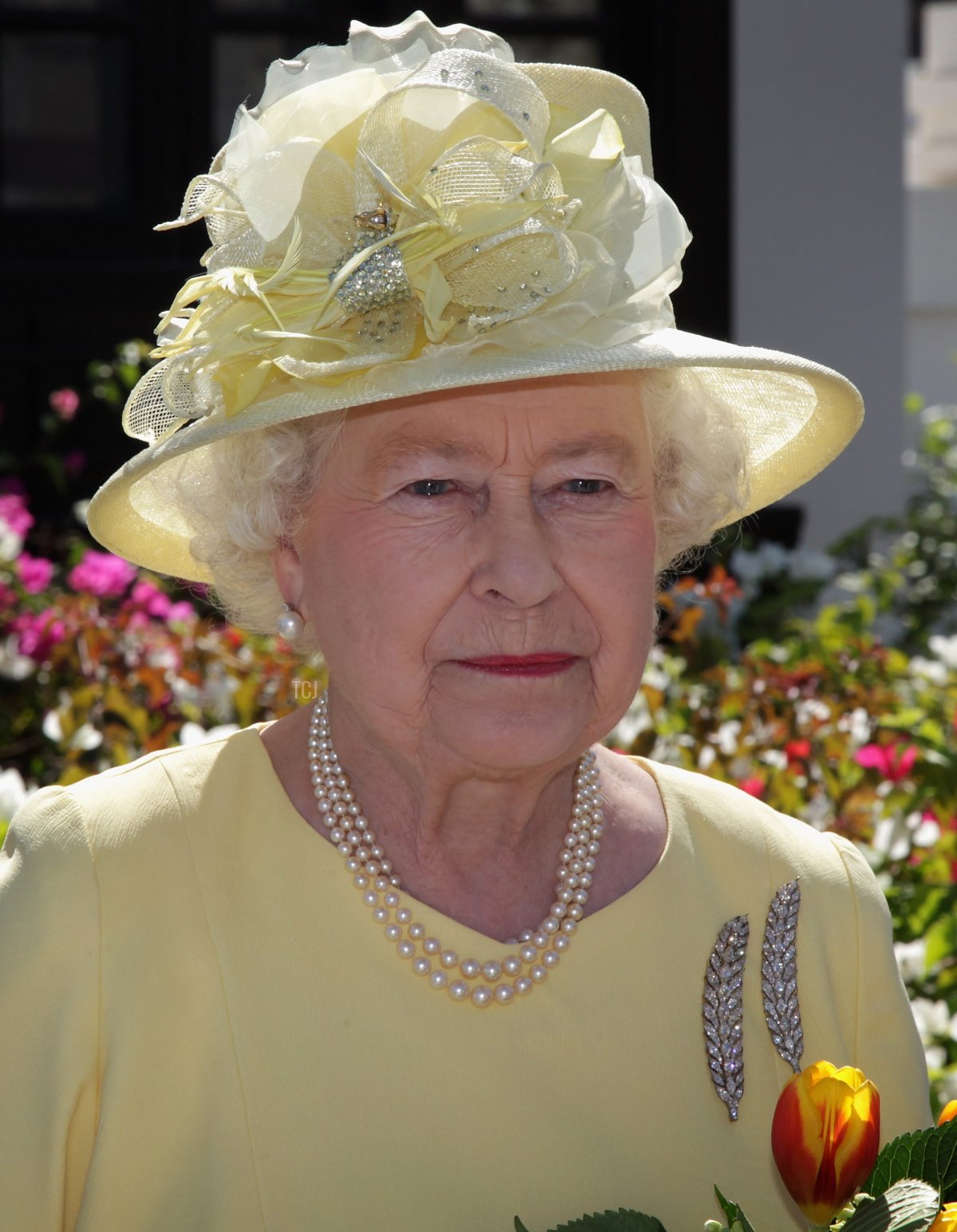
The Wheat Ear Brooches
Menkes notes that Victoria included “six brooches with wheat leaf design” in her heirlooms of the crown collection. The diamonds in the brooches date to the reign of King George III. The Queen has used the jewels as brooches, and she also occasionally wears them as ornaments in her hair. (Princess Eugenie borrowed them to use as hair accessories for her wedding reception in October 2018.) Here, the Queen wears two of the wheat ears as brooches in November 2010 for a reception at the ambassador’s residence in Muscat during her visit to Oman.
The Diamond and Emerald Fringe Earrings
The list of Queen Victoria’s heirlooms of the crown includes this vibrant pair of earrings, described in Menkes as “diamond tops with emerald drops and diamond fringes.” The Queen wore them occasionally in the early decades of her reign, but they haven’t been seen in quite some time. Here, the Queen wears the earrings in Ottawa in 1967, paired with the emerald setting of the Vladimir Tiara and the Godman Necklace.
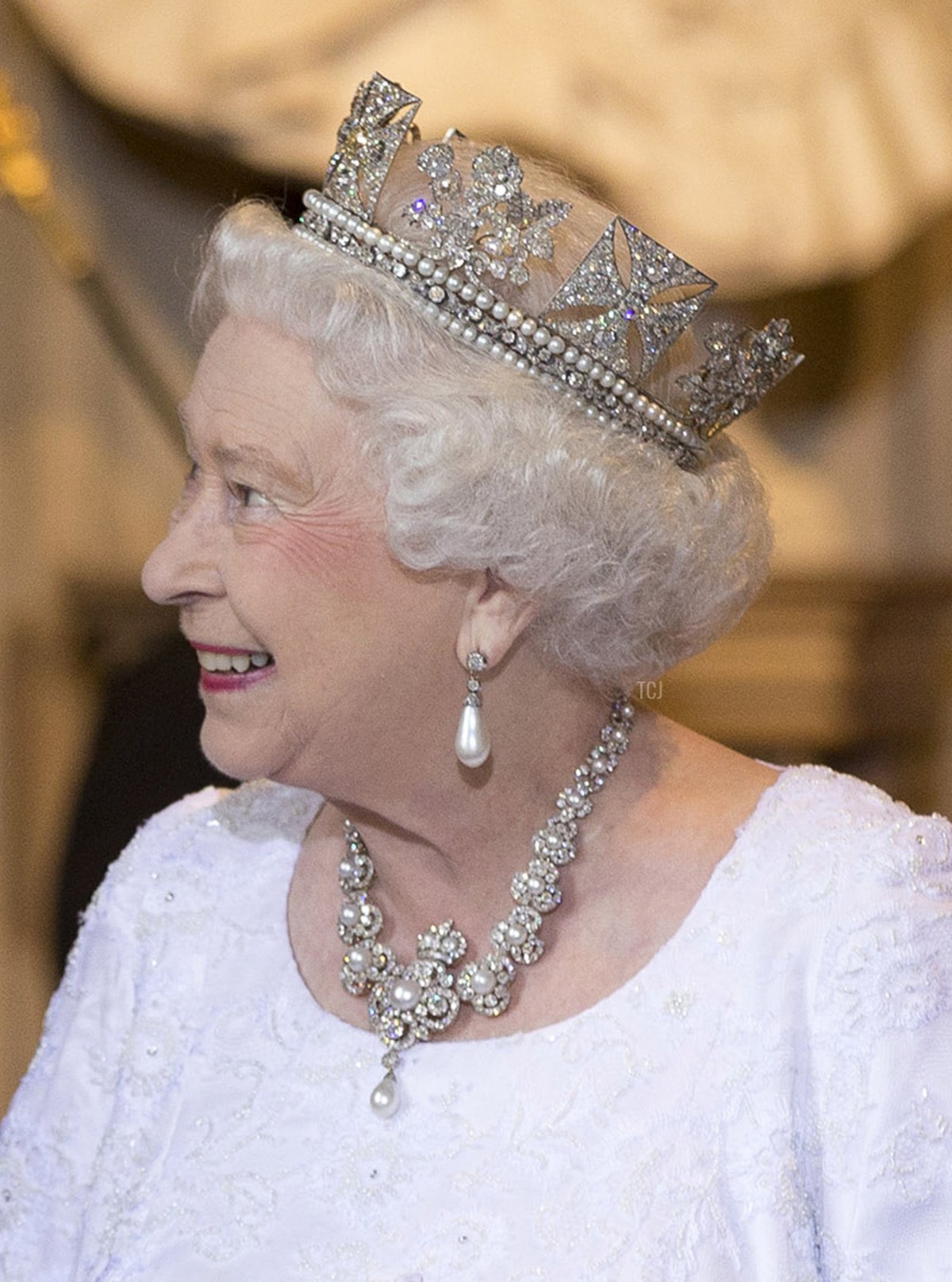
The Pearl Drop Earrings
These classic earrings feature diamond studs with long pearl drops connected by another small diamond brilliant. They were a gift from Prince Albert to Queen Victoria in 1847. Here, the Queen wears them with the Diamond Diadem and the Golden Jubilee Necklace for the State Opening of Parliament in June 2014.
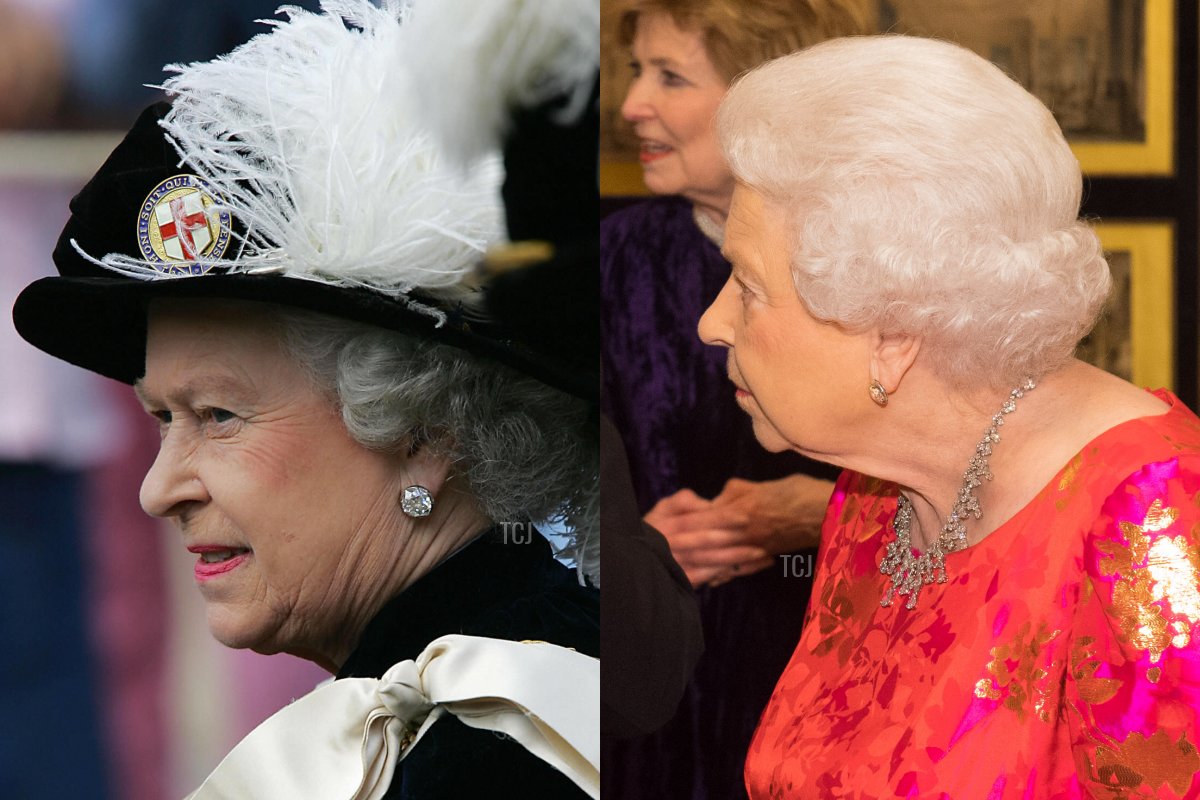
The Diamond Collet Earrings
Both Queen Victoria and Queen Mary owned diamond solitaire stud earrings with collet settings (meaning that a collar of metal hugs the outside of the stone). Menkes states that Victoria’s are “two diamond collets taken from a collet necklace.” Mary’s pair, says Hugh Roberts, were made using two collets taken from the Coronation Necklace. Both pairs are heirlooms of the crown, and telling the difference between them is (if you ask me) mostly a losing game. Above, the Queen wears diamond solitaire earrings with collet settings on two different occasions. I won’t guess which pair is which. On the left, the Queen is pictured wearing collet earrings at the annual Garter Day ceremony in June 2005, and on the right, she’s photographed wearing collet earrings with the King Khalid Necklace at a Diamond Jubilee dinner for the Aga Khan at Windsor Castle in March 2018.
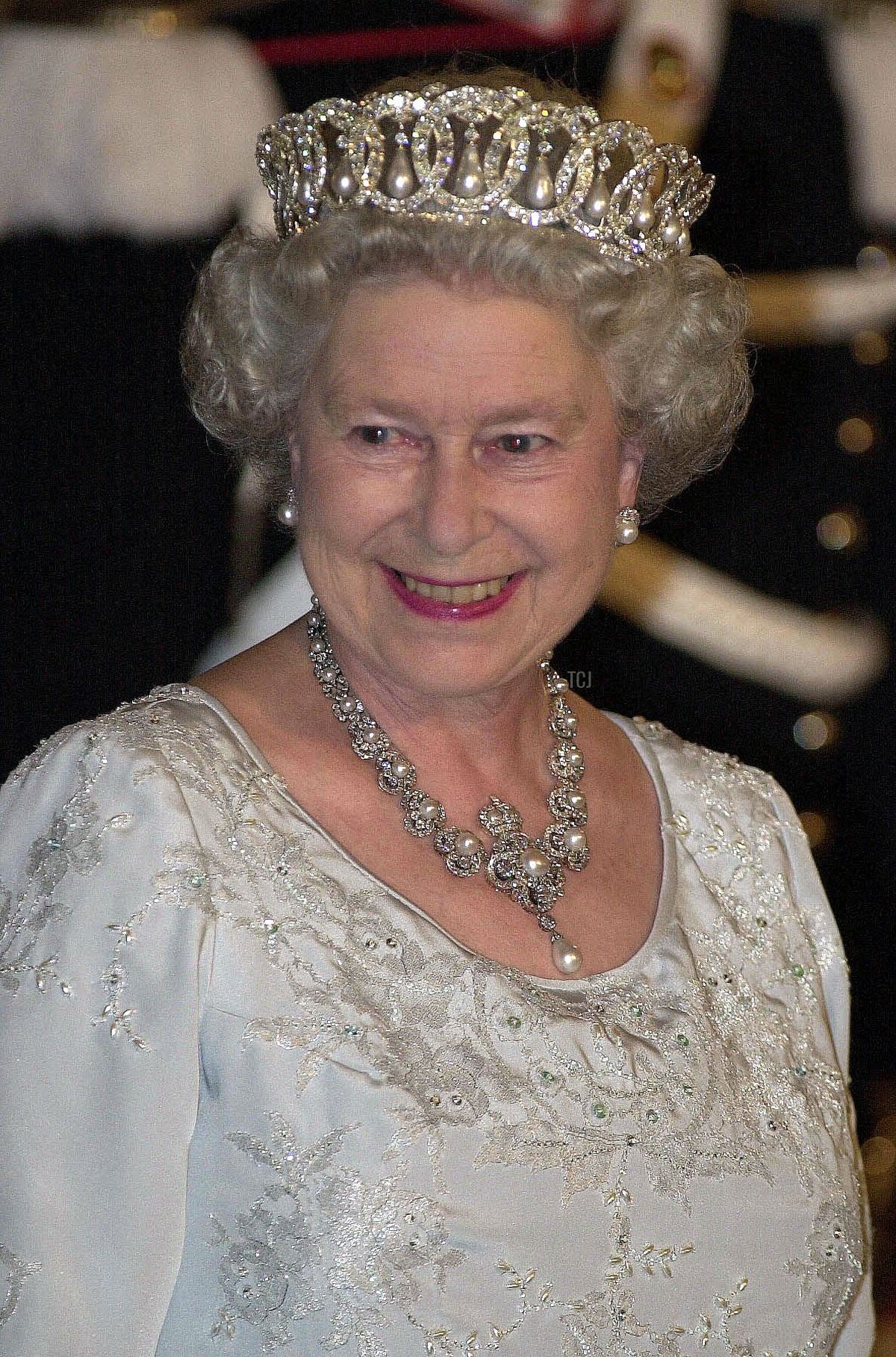
This elaborate diamond and pearl necklace was made by Carrington and Co. in 1888 to mark the 50th anniversary of Queen Victoria’s reign; it was commissioned in a very complicated, political process by a committee of aristocratic women. It became one of Victoria’s favorite pieces, so it’s no surprise that she designated it as an heirloom of the crown. The Queen wore it for her first opening of parliament in 1952, and it’s been a staple of her gala jewelry ever since. Here, the Queen wears the necklace with the pearl setting of the Vladimir Tiara and Queen Alexandra’s Wedding Earrings for a state banquet in Rome in October 2000.
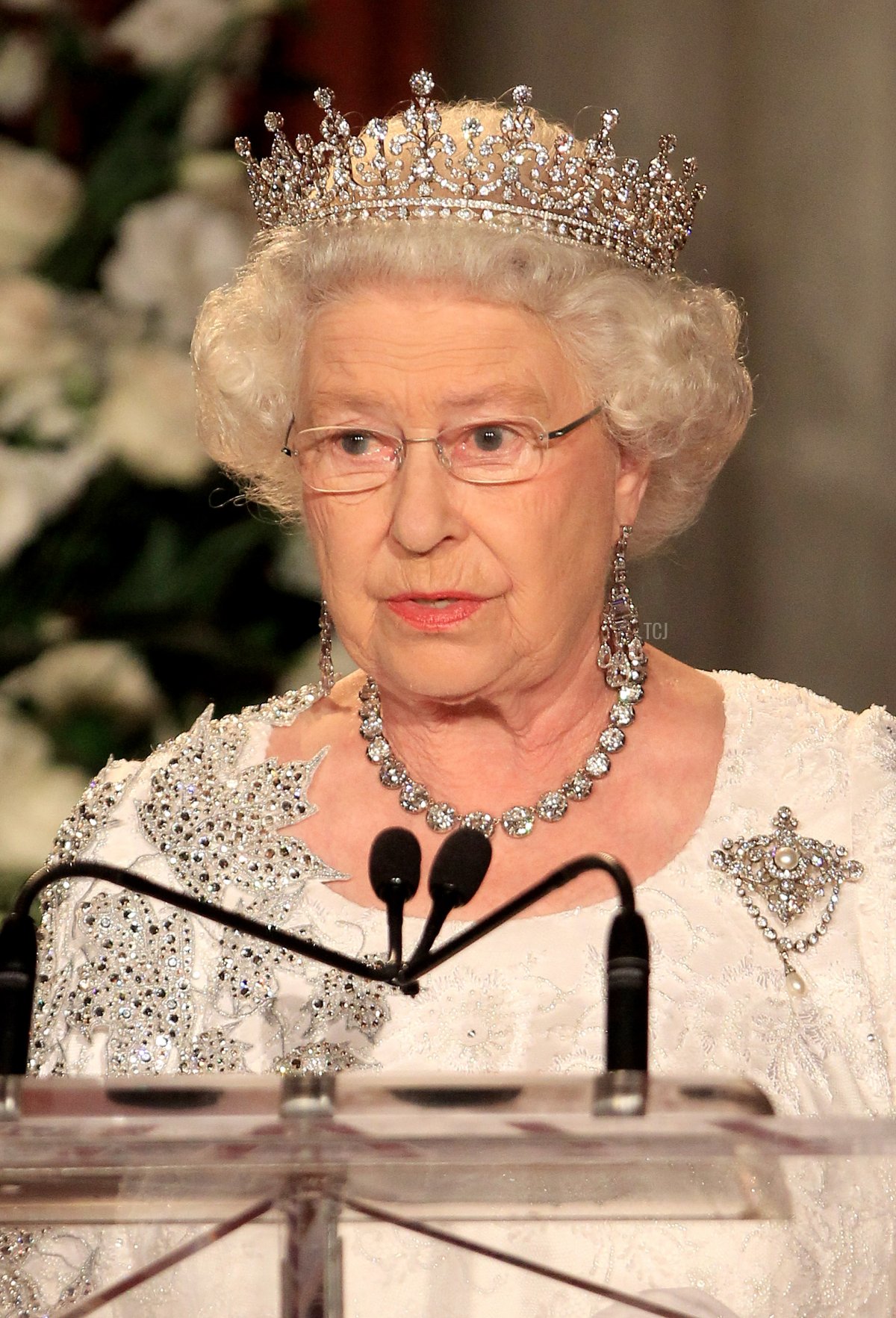
Only two monarchs in British history have celebrated a Diamond Jubilee: Queen Victoria in 1897 and Queen Elizabeth II in 2012. To mark Victoria’s milestone, her Royal Household presented her with this Garrard diamond and pearl brooch. Victoria called the piece “beautiful” and designated it an heirloom of the crown. It subsequently passed to each queen consort, but the Queen Mother held on to the piece until her death in 2002. Here, the Queen wears the brooch with the Girls of Great Britain and Ireland Tiara, Queen Alexandra’s Collet Necklace, and the Greville Chandelier Earrings for dinner at the Royal York Hotel in Toronto in July 2010.
Leave a Reply
You must be logged in to post a comment.